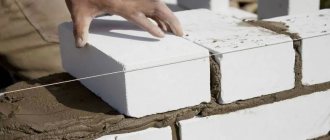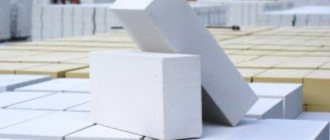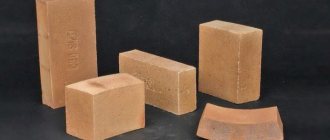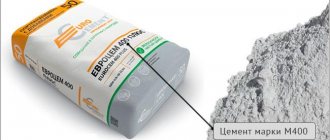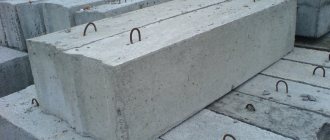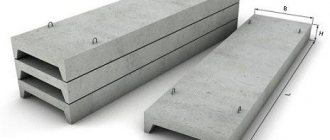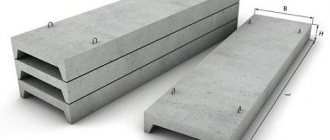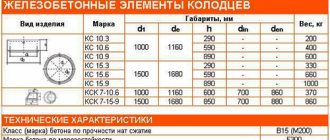Brick is one of the oldest building materials known to man. During its existence, the shape and manufacturing technology of bricks have remained virtually unchanged: these are small blocks of regular rectangular shape, made of baked clay.
However, among the varieties of this material, there is a “black sheep” - silicate brick. It appeared in Germany a little over a century ago: in 1880 . In fact, it is an ordinary brick, but it is white. This is caused by the addition of lime to the composition.
Specifics and history of sand-lime brick
Brick is one of the most popular building materials in the world.
The base of the block is silicate, which is silicic acid. The composition contains quartz sand, concrete and lime. There may be additional impurities. The main component of sand-lime brick is quartz (90%), therefore the material is white. If it is red in color, then the main component is ceramic clay.
When producing the material, quartz sand is poured into the water. The resulting mixture is poured into a mold and heated. The entire process takes place under high pressure. The blocks become dense due to the setting of quartz and lime. For production, an autoclave is used, inside the equipment the temperature rises to 200ºC, pressure indicators reach 15 atmospheres. It takes a day to produce one batch of material.
Important! The size of the mold is selected so that the mass hardens quickly. Be sure to check that the bricks are of the correct geometric shape.
The first bricks using quartz began to be made in 1880. In Germany, these products began to be used for the construction of walls. The manufacturing technology has been preserved to this day, only it has become more modernized. The builders made a number of adjustments.
Mass production of the material began in Russia. In 1901, 9 factories were built, producing 150 million blocks per year.
Price for one
Due to its low price per piece, sand-lime brick is very popular among construction companies and individuals. The cost varies depending on the style of execution, color, type, size and region of brick production. The price between the solid and hollow versions ranges from 3–6 rubles per unit.
The full-bodied brand M100 costs from 6 rubles/piece, M250 – from 12 rubles/piece. Facing starts from 8–10 rubles per piece. We must not forget that wholesale quantities are always much cheaper than small deliveries. Promotions and discounts for regular customers, relevant for large construction companies, play a role in the pricing of sand-lime bricks.
Areas of application of sand-lime bricks
Dimensions, weight and other characteristics of silicate briquettes are widely used in construction
. Purpose:
- The material is used for the construction and cladding of walls and partitions.
- The product is used in the construction of dachas and country houses, industrial and public buildings.
- Quartz bricks are added when building foundations and fences.
- The blocks are suitable for erecting walls in bathrooms, building basements and basements.
But sand-lime bricks are unstable to high temperatures and have increased hygroscopicity. The product cannot be used for laying a fireplace or stove. Not used for cladding hydraulic buildings.
conclusions
To ensure optimal conductivity and heat retention, brick walls should be as thick as possible. The crevice material is a completely different matter.
This ceramic briquette has through holes (regardless of the shape), which is why it is as warm as possible, for which there is a logical explanation: by increasing the number of voids, the thermal conductivity of the ceramic brick increases. And as a result, walls made of it can be as thin as possible.
In addition, ceramic briquettes with slots are much lighter, so they do not load the foundation and plinth as much. The standard brick sizes are known to every builder, because this indicator must be taken into account . Initially, this must be done in order to correctly calculate the amount of material used.
Therefore, knowing certain numbers and skillfully substituting them into the formula, you can quickly and accurately determine the amount of money that will be spent on repairs or construction.
Types of sand-lime bricks
The main factor in the size of bricks is the aspect ratio 1:1/2:4, which allows you to alternate masonry in a transverse and longitudinal arrangement.
Classification of building materials:
- According to the format of application, they are distinguished: structural, the surface of which is rough and needs plaster, facing - a smooth block with smooth edges.
- According to the internal filling, there are: porous white silicate brick with a density of less than 1500 kg per 1 m³ and solid brick with a density of 1500 kg or more per 1 m³.
- Based on the size of the block, there are single (250mm*120mm*65mm), one-and-a-half (250mm*120mm*88mm), double (250mm*120mm*138mm) bricks.
- Bricks are separated from each other by indicators of strength, water absorption and frost resistance.
Hollow or solid
Most often, hollow bricks are used for laying lightweight walls.
When choosing blocks, pay attention to the absence or presence of sand-lime brick voids:
- Full-bodied type - differ from each other in colors. But white blocks are in demand. There are no cells available. The product is wear-resistant, but weighs a lot.
- Hollow type - there are irregularities and voids. Used for the construction of partitions or walls. The blocks improve the thermal insulation of the room. It will be possible to create a comfortable microclimate in the house.
What dimensions does silicate have?
Types of sand-lime brick.
Bricks and silicate stones are made in the shape of a rectangular parallelepiped with standard dimensions. A single brick has dimensions of 250x120x65 mm. Single hollow silicate brick will have the same parameters. A one and a half brick has dimensions of 250x120x88 mm and can weigh approximately 4-4.3 kg. The size of double sand-lime brick is 130x176x206 mm. Such products are suitable for the construction of walls of buildings no more than 3 floors. The use of double products will reduce overall costs.
The density of sand-lime brick is 1900 kg/m³. The manufacturer can offer not only solid, but also hollow bricks. They began to be produced to facilitate density, which is 20% greater compared to ceramic products. A product made of silicate has less weight if there are voids in its body. This reduces pressure on the foundation and improves thermal insulation properties. Lower thermal conductivity allows walls to be made thinner without reducing their degree of freezing and sound insulation. Bricks of the same size may have different weights.
Dimensions of sand-lime bricks.
The produced 11-hollow silicate stone has a size of 250x120x138 mm. In hollow silicate, according to GOST, all holes are not through and are located perpendicularly. The thickness of the outer walls in the presence of voids should not be less than 10 mm. The product can be manufactured with other holes having a shape different from the standard requirements, but all dimensions must comply with GOST.
Hollow brick is preferable to use in the construction of multi-story buildings. It has better thermal insulation and lower specific gravity, significantly reducing the load on the foundation. It is replaced with solid brick of the required size if it is planned to install a ventilated façade on the outer wall of the building.
Standard sizes of white and red bricks
Most often, building materials are produced at a factory, taking into account standard indicators. Dimensions of sand-lime brick – 250mm*120mm*65mm. These parameters are used to create a single view. Craftsmen can purchase additional batches as needed.
The size of sand-lime bricks is regulated by GOST 379-2015. The block must be rectangular in shape. The length of the standard material is 250 mm. Thickness indicators depend on the type. The height of the product varies from 65 to 138 mm. The width of all models is the same and is 120mm.
Important! According to the standards, deviations from the parameters established by GOST are prohibited. “Original”, “non-standard” and “designer” models will not be offered for sale. All sizes are standard so that builders do not make mistakes in calculations.
If there is a large-scale construction, then no one will calculate the mass of blocks or the number of pieces individually. For calculations, the specific gravity of sand-lime brick per cubic meter of masonry is used. Pay attention to the mass of bricks, as well as glue or mortar. You don't have to calculate every component. Simply multiply by a certain value of the corresponding block type.
If you choose a white silicate type, then the specific gravity of the product per cubic meter will be 670-2100 kg. But the final result will depend on the dimensions of the material - hollow or not inside.
Deviations from standard sizes
Most often, single bricks are used in construction, but to speed up the work they choose the one-and-a-half type. Bar dimensions:
- 250mm in length;
- 120mm wide;
- 88mm high.
For 1 m³ you will need 378 one and a half blocks. The material weighs 4.9 kg (solid) and 4.3 (hollow).
Maximum speed during wall laying is achieved using a double bar. The length of the sand-lime brick is 250 mm, the width is 120 mm, the height is 138 mm. The size of one and a half silicate bricks is slightly smaller. The volume turns out to be 2 single-sized blocks. There will be 256 pieces in 1 m³. The weight of the hollow type is 6.7, and the solid type is 7.7.
Select one-and-a-half or single material
Thickened silicate brick, sized 250x120x88, previously officially called one-and-a-half brick, is gradually displacing its popular brother, single brick - 250x120x65, from the building materials market. The reason for the changes taking place, as experts explain, is the desire of the population to combine completely opposite things - strength, low cost of material and acceptable ability to retain heat.
Let's compare the advantages and disadvantages of ordinary sand-lime brick, with dimensions 250x120x65, and thickened brick, with dimensions 250x120x88:
The simplest calculation shows that the number of thickened pieces is approximately 1.35 times less than the number of standard sizes, which means that the walls of the house will be built faster; It is unlikely that you will be able to win on paying masons when laying a block of 250x120x88, the number of pieces of material is less and the weight is greater
The same can be said about transportation costs; for carriers, it is not the number of pieces of silicate block that is important, but the weight of the cargo. Regardless of the type of silicate brick being laid, the total volume of the walls will remain the same and the total weight of the sand-lime brick will not change. Benefits can arise if you use silicate material with dimensions of 250x120x88 with artificial voids
With a standard cavity volume of 30-40%, its weight will be identical to a single solid block, and its thermal insulation properties will be 40-50% higher. The cost of thickened sand-lime brick 250x120x88 is at least 20% higher than its single counterpart; according to builders, it does not always look more attractive in brickwork due to its size.
The last factor is a matter of personal preference of the customer. Manufacturers of one-and-a-half bricks compensated for the last drawback by releasing special options with decorative elements and cladding. Colored versions made of silicate material, painted with mineral compounds in black, blue, and white, have appeared on the market. Particularly popular is the coloring of ceramic fiery red stone. There are options for a silicate block with a beautiful chipped front surface, imitation of natural stone material or debarked logs.
Markings for technical characteristics of sand-lime bricks
When choosing a material, a number of additional parameters are taken into account. All criteria affect the cost of the blocks, strength and reliability, and the service life of the finished walls.
Brick weight
Answering the question of how much sand-lime brick weighs, according to established standards GOST 379-2015, there are 7 classes of blocks. Low weight and low price for a hollow bar. The weight of a full-bodied species is 4 kg or more. But to speed up construction or repairs, double size is used; the weight of white sand-lime brick is 8 kg. Mass influences the choice of foundation for a house. Therefore, when drawing up a project, an estimate is drawn up, taking into account the parameters of all materials used.
| Type of sand-lime bricks | Weight per unit, kg |
| Solid brick: | |
| Single 250x120x65 | about 3.7 |
| One and a half 250x120x88 | from 4.2 to 5 |
| Hollow brick: | |
| Single 250x120x65 | about 3.2 |
| One and a half 250x120x88 | about 3.7 |
| Double 250x120x138 | about 5.4 |
| Facing hollow: | |
| One and a half 250x120x88 | from 3.7 to 4.2 |
| Double 250x120x138 | from 5 to 5.8 |
In this case, the weight of the brick is determined by the formula m=Vbrick*p, where
p—average density, kg/m3
Tables of the main characteristics of sand-lime bricks
All information is shown in the table:
| Characteristics and parameters | Full-bodied silicate model | Hollow quartz model |
| Weight | 3.6 if the block size is 250*120*65 5 if the material is 250*120*88 | 3 with size 250*120*65 4 with parameters 250*120*88 |
| Water absorption in % | 51 | 51 |
| Density (kg/cm²) | M125-M200 | M150-M200 |
| Density (kg/m³) | M150(1600-1800)-M200(1800-2000) | M150(1400-1500)-M200(1500-1600) |
| Frost resistance (cycle) | F35-F75 | F35-F75 |
| Sound insulation (dB) | 51 | 51 |
| Thermal conductivity (W/mS) | 0,66-0,87 | 0,57-0,82 |
Density in kg per cubic meter (for large structures)
The density of silicate products is indicated by the letter M150 or M200.
Indicators are calculated depending on the specific type of block or area of the finished product. According to GOST, the average density of sand-lime brick is 1500 kg per 1 m³. Indicators are developed for standard materials. The block can be solid or porous. The species are distinguished from each other by their numerical values.
For large structures, the average density is 1800-2000 kg/m³ for a solid bar, 1500-1600 kg/m³ for a hollow type. If you need to calculate values for different bricks, use a universal calculator.
Strength in kg per square centimeter (for flat structures)
For the construction of internal walls, bricks with appropriate strength are usually used.
For cladding, a brick of at least M125 is used. The indicator is designated by the letter M. The values are calculated taking into account the maximum load per 1 cm². Experts have identified 6 classes for standard dimensions of sand-lime brick. The values range from 75 to 200. The indicators determine how the block can withstand expansion and contraction. If the bar is hollow, then it is designated M-25, solid - the maximum value is M-300. In the bathroom, the strength of the material decreases.
For a flat structure, the brand of blocks chosen is M100-150 if the material is hollow and M125-M200 is the value for a solid type. How long the wall will last depends on the formulation of the composition. When mixing, take into account the height of the wall and thickness.
Frost resistance
Frost resistance is characterized by the number of freezing and thawing cycles.
Average values for standard sand-lime brick are 15, provided they are used to create internal partitions. The indicator is designated by the letter F. For cladding the facade, erecting load-bearing walls and fences, choose a material with high frost resistance. The average value is 100.
To increase resistance to low temperatures, special components are added during the production of blocks. Because of this, the size of the bar may change. But you shouldn’t overuse additives. The house will not comply with GOST. Such material cannot be used to create internal partitions because it is harmful to health.
Thermal conductivity
Structures made of solid one-and-a-half bricks must be additionally insulated in order to retain heat.
When choosing many building materials, attention is paid to thermal conductivity. The main task when building a house is to retain heat inside the rooms.
The thermal conductivity of quartz brick depends on the density. If the product is hollow, then the indicators vary from 0.55 to 0.8 W/mS (where, W - Watts, m - meters. C - degrees C). The values for a solid block increase to 0.67-09 W/mS.
Water absorption
The accompanying documents show the result of water absorption obtained in the laboratory for the entire batch of bricks.
This is an independent marking unit. According to building regulations, the percentage of water absorption is 6%. But the values for silicate are always higher and reach 12%.
Soundproofing
Sand-lime brick is better than ceramic brick in terms of protecting rooms from sounds.
For all types of quartz blocks of standard size - one value. The indicator is 51 dB. If the material is one-and-a-half or double, then the sound insulation changes.
Specific gravity (in kg)
Values for different types of bricks:
- full-bodied appearance - 3.5-3.6 if the block is single, 5 for a one-and-a-half block;
- hollow type - 3 for the traditional size, 4 - if the dimensions are one and a half.
Important! All indicators are indicated for silicate only. But often the dimensions of the red type coincide with the white one, and the marking values and standards according to GOST differ.
Classification of silicate blocks
According to GOST 379-95, bricks are divided into groups depending on their application, dimensions and physical properties
- By purpose:
- Facial. This type is chosen for finishing the facade. The blocks are available in a wide range of colors and different textures (for example, natural stone). Smooth facing brick has straight, clear edges and flat edges; it can also serve as a structural material.
- By structure:
- full-bodied;
- hollow.
- By porosity:
- dense (above 1500 kg/m3);
- porous (less than 1500 kg/m3).
- In terms of strength (it is expressed in kgf/cm2) – 8 grades: 75; 100; 125; 150; 175; 200; 250; 300.
- In terms of frost resistance (expressed in the number of freezing and thawing cycles) - for ordinary blocks F15, F25, F35, F50, and for facing blocks - at least F25.
- By size:
- single – 250 x 120 x 65 mm;
- one-and-a-half (thickened) – 250 x 120 x 88 mm;
- double – 250 x 120 x 138.
Pros and cons of the material
Advantages of a quartz block:
- Universal white brick - suitable for the construction of external and internal walls and decoration. At the same time, the same strength is maintained for all types of work.
- Excellent values of such parameters as: density, service life, strength.
- Good thermal insulation and sound insulation is an important point that people pay attention to when choosing material for building a house.
- Silicate is environmentally friendly, but there are exceptions - these are products manufactured outside GOST.
- The blocks are resistant to mold, as they contain lime, which has excellent antiseptic properties.
- Quartz products are frost-resistant.
- When laying walls, it is possible to use different types of mortars. You can also use polymer glue.
- Standard bricks are the same size. It is easy to calculate the amount of material for work.
- It is enough to simply calculate the thickness of the block using the height of the building and knowing the dimensions of the material.
The product has its disadvantages:
- Sometimes designers need material of different geometric shapes. In this case, sand-lime brick will not work.
- High rates of water absorption negatively affect the strength and thermal insulation of the material.
- You cannot use blocks for laying the walls of a swimming pool, sauna, basement or bathhouse.
- You will have to do additional waterproofing and drainage work.
- Products are not resistant to elevated temperatures.
- Bricks weigh a lot, you will have to spend money on a strong and reliable foundation.
- You should use the material with caution on the roof and balcony.
Appearance requirements
The standard also specifies requirements for the appearance of facing and ordinary sand-lime bricks. The finishing facing brick, painted in mass, must correspond to the standard. Small inclusions of unpainted mass - up to 5 mm - are allowed. Other possible disadvantages are summarized in the table. Basically, there may be a broken edge and unclear edges. The sizes of chips and their number are standardized.
Possible defects in silicate facing and ordinary bricks and their permissible quantity
The standard allows some roughness or breakage of an edge; ordinary bricks may have small cracks - up to 4 cm long. There may not be any cracks. A crack of any size that extends across the entire spoon or most of it is unacceptable. It is acceptable if the brick cracks across the width of the bed. But the size of the crack cannot be more than 40 mm long.
Not all cracks are permissible in sand-lime bricks
In ordinary sand-lime bricks of any size and type, inclusions of clay, lime, sand or any other foreign inclusions are unacceptable. They should not be on the surface or on a fracture if there are half or damaged elements. At the same time, there may be such inclusions on the “rough” sides of the facing silicate. But the size of inclusions is no more than 5 mm and there should not be more than 3 pieces per brick/block.
What is better red brick or white?
Red brick is often used to build foundations, walls and partitions.
Many builders are trying to answer this question. The white and red species have their own application advantages. Select the type individually, focusing on the following parameters:
- project features;
- special purpose;
- type of construction work.
The ceramic type is in greater demand, and silicate products are in second place. In this case, mixed masonry is often chosen. But there are times when a certain material is used.
To build the walls of a bathhouse, basement sauna, or to make a stove or fireplace chimney, choose red ceramic bricks. The blocks are suitable for arranging garden paths.
However, the silicate type is cheaper. The material is chosen to build a high-rise building with excellent sound insulation performance. This type is also environmentally friendly and suitable for the construction of partitions in a residential building.
The choice of material type is influenced by size. Silicate double products weigh a lot and place a large load on the foundation. The red type also has a large mass. Therefore, there is no difference between the two types.
Classification of bricks by composition
For the production of bricks, a variety of raw materials are used, which determine the scope of its application and dimensional characteristics. The following types of brick products are widely used in residential and industrial construction:
- Red ceramic , made from red clay or its varieties by firing.
- White silicate , consisting of lime and sand with the addition of various additives that determine the color of the brick.
- Facing . This type is made from a certain type of clay by firing in ovens at a temperature of 1000 to 1200 degrees. In the production of facing bricks, hyperpressing technology is used and therefore this type of brick product is often called hyperpressed brick.
- Clinker , made from a mixture of refractory types of fireclay clay, feldspars and clay materials. Clinker is formed as a result of flowing in kilns with a temperature of 1200 degrees.
Clinker brick is a type of facing ceramic products.
Packing and packaging of sand-lime bricks
The plant uses standard technology, which is specified in the regulations. This way the packaging and delivery process does not take much time. This is relevant, it is convenient to quickly calculate the required amount of material.
Number of bricks per square meter
Construction of a house made of sand-lime brick
When calculating blocks based on area, the size of the product is taken into account. If a wall is erected with a width of one block, then according to GOST the consumption will be:
- single type - 204 pieces per meter;
- one and a half type - 156 pieces per meter;
- double type - 104 pieces per meter.
When you need to build a thickened wall, the width will be 2.5 blocks. Indicators for consumption:
- 255 pieces per meter - if a single brick;
- 195 pieces per meter - for one and a half type;
- 130 pieces per meter - for a double look.
Number of bricks per cubic meter
Laying walls
During the calculation, density and size are taken into account. The calculations will look like this:
- Find out the volume of one block - length * width and height (standard brick 0.25 * 0.12 * 0.065 = 0.00195).
- Divide 1 meter by the resulting value (1/0.00195=512.82).
- The final result is the material consumption (513 pieces).
Number of sand-lime bricks in a construction pallet
When transporting pallets with bricks, it is necessary to take into account the weight of the container, which ranges from 18 to 40 kg.
You can use construction tools when calculating. For these purposes, craftsmen choose pallets for transporting blocks.
The result will not be the same, since the size of the stands is different. The quantity varies from 240 to 380 pieces. Certain values are specified taking into account the load on the pallet and how many bricks are in the pack.
Number of sand-lime bricks in a factory pack
Factory brick packaging
Indicators will depend on the manufacturer. One container can contain 480 or 560 pieces. The manufacturer must indicate the exact quantity on the packaging. The technical characteristics of the blocks are also prescribed.
The same approach is used for many materials. You can find out information about red or sand-lime brick on the packaging from the manufacturer. If you buy bars without containers, then for calculations you will find out the volume and area values.
Main varieties and characteristics
The process of creating sand-lime brick is fundamentally different from the method of manufacturing its ceramic analogues - in particular, different raw materials are used, which are processed in a different way.
To make it, a mixture of siliceous filler (quartz sand), siliceous binder (fly ash, sludge, etc.) and process water is used (it is needed to moisten the mixture, it is used in small quantities). The mixture is pressed and then processed in an autoclave.
Sand-lime brick in an autoclave
The finished white brick is characterized by the following parameters:
| No. | Name | Meaning |
| 1 | Thermal conductivity level | ≤0.87 W/m*K |
| 2 | Frost resistance | When completely immersed in water, it can withstand freezing followed by thawing (full cycles) of at least 15 and up to 50 |
| 3 | Water absorption | From 6% to 16% |
| 4 | Compressive strength | The range of possible brands varies from M75 to M300 |
If we talk about the scope of application of such structural material, then two main varieties are currently produced:
- ordinary (sometimes called a worker) - used directly for constructing vertical enclosing structures;
- facing - as the name suggests, it is mainly used for finishing work: it is used to cover facades, fences, as well as foundations and basement floors.
In addition, from the point of view of geometric characteristics, there are four types of such products:
| Variety | Length, cm | Width, cm | Thickness, cm |
| single | 25 | 12 | 6,5 |
| One and a half (sometimes called thickened) | 25 | 12 | 8,8 |
| double | 25 | 12 | 10,3 |
| raised | 25 | 9 | 6,5 |
- three-hollow (void content is 15%);
- eleven-hollow (void content – 25%);
- fourteen-void (contains about 31% voids).
Age and shelf life of sand-lime bricks
The duration of use of brick depends on compliance with the technology of its production.
The material was used in construction even during the reign of princes. Despite the fact that the technology for creating blocks has survived to this day, modern products still have their shelf life.
Products will last a long time if all standards and norms prescribed in GOST were met during their production. In this case, the brick will last as long as possible and all its technical characteristics will correspond to the marking table.
When the blocks are laid, the second stage of work is plastering. If the product has a geometric pattern, the solution will adhere perfectly to the surface.
Russian Euroformat
Russian Euroformat standards 0.5nf, 0.7nf, 0.9nf have been adopted, which differ from EU standards. The goal of developing small-piece products was to create economical masonry. Euro and single formats are the same length, with a slight difference in width. This is the benefit of using it. To clad a house with 0.7 nf bricks, 3 m2 less is required than 1 nf. The cost-effectiveness of masonry is 30% with the same characteristics of strength and frost resistance.
Single brick and one and a half brick: what is taken as a basis
1nf brick is taken as a standard in construction. Based on the parameters, subsequent types and models are developed. Thickened 1.4nf brick was introduced into production in the USSR in the 30s in order to speed up construction. The average quantity per cubic meter is 378 pieces. The release of one-and-a-half format products made the process of building buildings profitable - the height of 1nf and 1.4nf products is the same. The cost is the same as a single one or slightly higher, and due to the speed of laying, labor costs for construction are generally reduced.
How to choose the right brick
When choosing a material, pay attention to the following criteria:
- density - the higher, the more reliable the block;
- strength - using the indicator, they find out what load the product will withstand;
- porosity – if there are many pores, then the house will be warm;
- frost resistance - how many cycles of thawing and freezing the brick can withstand;
- fire resistance - will the material withstand high temperatures;
- moisture resistance - the higher the value, the less water the block will absorb;
- thermal conductivity - whether the block can retain heat inside the room.
When to use facing and ordinary bricks
Layout of ordinary masonry
Layout of ordinary masonry
The production of both types is strictly controlled. The material is manufactured taking into account all the requirements, GOSTs and standards.
Ordinary silicate is chosen for the construction of a load-bearing partition or wall. The working surface is covered with plaster. A standard block is enough to make a room soundproof.
Facing brick is chosen for finishing. The surface is even and smooth, there are no chips, and the color is even. At the client's request, manufacturers can make blocks with rounded vertical ribs on the front side. Then there will be two types of surface: spoon and butt.
Important! There should be no broken edges, broken corners or cracks on the facing bricks.
Upon request, the manufacturer produces models with decorative coatings. Such blocks are used for cladding door and window openings. Used to bring design ideas to life. Products may have a relief surface with an imitation of natural stone.
Silicate products have excellent thermal insulation values. For the cladding of the building, types with different color shades are chosen.
Sand-lime or ceramic brick
For the construction of the basement floor, the second type is used. Also suitable for paving paths in a country house or area near a country house. But the silicate version is cheaper, and the material has excellent sound insulation values. The first type is chosen for the construction of high-rise buildings.
This type is also suitable for constructing an internal partition. The material differs from other types in its environmental friendliness and resistance to fungus and mold. If a large amount of material needs to be laid, then builders choose ceramic blocks, since they weigh less.
Product quality control: storage and transportation
All technical documentation about silicate is prescribed in GOST 379 2015, which also specifies control methods. The requirements specify the rules for storing and transporting the material.
Basic control methods
The following methods are distinguished:
- Quality standards for appearance, block dimensions - deviations from the norm are found using a square or ruler, less often a caliper is used. Please allow 1mm errors. Whether the mass is extinguished or not is determined visually.
- Product colors are checked against high quality samples. One option is pale, and the other is bright in color. Both types are normal. The material produced should not be very different, otherwise the products will not be accepted.
- Checking bending and compressive strength - check whether the product complies with GOST 24332 or 8462. In the second option, the bricks are placed under a press and create a large load.
- Frost resistance - samples for testing are first frozen and thawed. Specialized cameras are used for testing. When the cycles have been repeated the required number of times, a report is drawn up.
- Checking how the decorative coating adheres to the surface - glue a metal plate to the sample, and then try to tear it off.
- Thermal conductivity - creates a heat flow and directs it to the blocks. Record all measurements obtained and draw a conclusion.
- Water absorption - samples are first weighed dry and then immersed in water. Check the mass again.
Transportation of products and requirements for storage conditions
Loading and unloading of pallets with bricks must be done with cranes.
All goods are stored separately from each other by category:
- texture;
- color;
- size;
- technical indicators.
All warehouse premises are checked for compliance with GOST 379-95 and standards.
Freight transport is used to transport products. During the delivery of goods to their destination, the rules for packaging, fastening, loading, and unloading are followed. Blocks are transported on special pallets. Cannot be delivered in bulk or scattered. All products are pre-sealed with film.
Standards
In Russia, red ceramic artificial stone is manufactured in accordance with the requirements of GOST 530-2012. Requirements for the manufacture and size of white silicate bricks, as well as silicate stones and slabs, are described in GOST 379-2015.
For imported products, different standards are used.
For example, Ukrainian-made products are described by DSTU B V.2.7-61-97, Belarusian - STB 1160-99. Basically, the dimensions of the models correspond to Russian standards, since the basis for both documents were GOSTs of the USSR.
European standards (technical conditions) for piece materials made of clay or silicates are determined by the document EN 771-1 2011 (Russian version), the Russian equivalent of this document is GOST R 57347-2016.
Interesting: in the UK, taking into account the accepted inch measurement system, a standard block fits into a rectangle of 215 × 102.5 × 65 mm.
Traditionally, piece materials with dimensions exceeding the volume of a standard single product by no more than 2.1 times are called bricks. Models of large dimensions are called ceramic stones. One-and-a-half and double models are especially popular - increasing the dimensions significantly speeds up construction, especially when laying the foundation.
Features of laying sand-lime bricks
Layout of bricks in masonry
Before starting work, the type of masonry is determined: whether it will be a base or a cladding. The thickness of the block depends on the choice. There are three options:
- 250 mm;
- 2 bars;
- 2.5 bricks.
They immediately decide whether additional insulation is needed or not.
Before starting masonry
Walls can freeze in winter. It is necessary to use special insulation on the outside, which can be polystyrene foam, mineral wool or polyurethane. You can use the material inside the building, but in this case condensation will form on the walls. The result is a layered masonry.
Process technology:
- Two half-brick partitions are erected.
- Thermal insulation is laid between the walls, which is additionally secured using a special mesh.
Half-brick walls are also insulated using the same technology. This method is used in the north of the country. The thermal insulation layer is simple polystyrene foam. Choose a material 2 cm thick.
A building block made from the same foam concrete can also be used as insulation. The material is tied using masonry mesh.
Sand-lime brick laying technology
Use the following instructions:
- First, the corners are erected and raised by 2-3 rows at once, using a building level.
- The masonry is completed using the “stab” method, which resembles steps.
- A cord is pulled between the two corners and the ends are secured with nails that were previously inserted into the seam. Check that the rope is well tensioned.
- Check to see if the foundation is level. There should be no slopes. If there is unevenness, then fix the problem with a solution. If the slope is large, use brick to level the surface.
- All seams between rows are bandaged.
- When the masonry is leveled, the front part of the wall is erected. Make sure that the solution is not liquid.
What to pay attention to
To guarantee the aesthetic appeal of the masonry, it is necessary to control the jointing of each row.
Nuances of work:
- when the solution dries, open the masonry seam, otherwise they will become dense;
- check that there are no bulges on the inside.
To unstitch the seam, remove excess compound. Then you get a semicircular or rectangular shape.
Tools and materials
Prepare:
- construction stapler;
- impact drill or hammer drill;
- roller or brush for painting and priming;
- screwdriver;
- level;
- roulette;
- a saw with small teeth or a carpenter's knife;
- markers.
Properties of silicate material 250x120x88
The properties of silicate material 250x120x88 are higher than single and even ceramic ones. Before comparing the 250x120x88 brick with its single counterpart, let us explain why one-and-a-half silicate material has certain advantages over a ceramic block.
Problems of a ceramic competitor
The quality of ceramic stone depends 80% on the composition of the clay from which it is baked, and 20% on manufacturing technology or the level of technological sophistication of the process. A high level of production depends on the availability of expensive modern equipment, which in modern conditions is affordable only for large and serious production. But modern powerful deposits of high-quality clay have either been worked out or are being refined after the fact. The remainder are small and scattered deposits, with a mass of foreign inclusions of unsuitable clays. Therefore, the quality of bricks that have previously proven themselves in the market can suddenly be “degraded” to the limit.
Unlike ceramics, silicate material requires only high-quality cleaning; it is obtained artificially or synthetically, its quality is stable. Moreover, modern methods make it possible to significantly increase the density of the silicate mixture and increase the number of porous cavities, making it “openwork”. GOST for sand-lime brick 250x120x88 does not limit the manufacturer in this matter, as long as the wall remains at least 10 mm and the strength corresponds to the brand.
Where to use single and where to use one and a half silicate bricks
First of all, the parameters of sand-lime brick 250x120x88 allow you to comfortably take the material and lay it in the masonry with one hand. The strength and length of an adult's fingers is sufficient, but at the limit of capabilities. It is even more difficult to do this in canvas or textile mittens. The weight of a solid one-and-a-half brick 250x120x88 is rather large - 4.3 kg. Therefore, it is difficult to work with it, although the seams are thinner and smoother.
From the practice of laying sand-lime bricks it has long been established:
- One-and-a-half brick 250x12x88 is successfully used in high-rise and low-rise buildings with a wall thickness of more than 50 cm;
- When choosing a brick for a specific masonry thickness, one proceeds, first of all, from the need to avoid excess wall thickness due to the large size of the brick and the excess number of rows due to the small size of a single brick;
- The outer row of silicate bricks 250x12x88 should be hollow and, better, facing; if the wall made of silicate stone does not have additional thermal insulation, then the entire masonry is made with silicate material 205x120x88, if strength conditions allow;
- Internal partitions and supporting structures are made only from single solid material.
For quick laying, you only need a hollow one-and-a-half block 250x120x88. Its weight varies depending on the density and number of voids from 3.5 to 4.1 kg.
An example of calculating the need for bricks
A two-story house 10*10 is being built. Let's do the calculation:
- Determine the length of the walls outside: 10*4 = 40 m.
- The height of the house will be 6.20 meters. We get the area value – 40*6.20=248 m².
- The bricklaying was chosen at 2.5, then the thickness of the partition will be 64 cm.
- The requirement is calculated - 248 * 204 = 50592 pieces, where 204 is the number of blocks in the masonry.
When determining the amount of brick required, be sure to take into account the area of door and window openings, which must be subtracted from the total area of the building.
Thickness of different types of brickwork
The thickness of the brickwork is an important parameter that will affect the operational characteristics of the object. It is best to do it in several layers. If the masonry is carried out without insulation or air gaps, the dimensions of the walls correspond to the modular dimensions of the brick edges and the normalized thicknesses of the masonry joints.
| Type of brickwork | Wall thickness | Where is it used? |
| Half a brick | 120 mm | Construction of partitions inside the house |
| In one brick | 250 mm | Construction of load-bearing walls inside the house |
| One and a half bricks | 380 mm | Construction of private one-story outbuildings |
| Two bricks | 510 mm | Construction of load-bearing walls of residential buildings |
| Two and a half bricks | 640 mm | Construction of load-bearing walls of residential buildings |
It is important to know. The width of the masonry should be a multiple of half a brick.
Price for silicate white and red bricks
The construction of walls made of sand-lime brick will give the building a beautiful and aesthetic appearance.
The cost for the first type ranges from 22 to 90 rubles. The price for the red look varies from 13 to 80 rubles.
Silicate is chosen for the construction of houses and cottages, multi-story buildings. Red type for creating paths and lining fireplaces and stoves. When calculating the material, all technical characteristics are taken into account.
Advantages and disadvantages
If you make a house from silicate stone, you will get an excellent degree of insulation from street noise.
If you decide to buy sand-lime brick, the pros and cons of the material should be studied in advance. So, the advantages of this product include the following:
- The cost of sand-lime brick is lower than that of its ceramic counterpart. As a result, the estimated cost of construction work will be less, which will allow you to save on building a house. If the size of the brick is increased, then you can speed up the construction time.
- Correct and accurate dimensions of the element. Since the stone has virtually no shrinkage, the overall dimensions of the elements in any batch strictly comply with the standards. Moreover, during transportation, the edges and surfaces of the stone are not damaged, but remain as smooth and clear, without chips or cracks. As a result, laying stone is easier and faster, and the consumption of building mixture is also reduced.
- Due to its high strength, the material is able to withstand not only the weight of sand-lime brick in the wall, but also the load from other structural elements of the house. That is why load-bearing structures of a house can be assembled from this material. Moreover, unlike aerated concrete, silicate blocks do not require additional reinforcement.
- If you make a house from silicate stone, you will get an excellent degree of insulation from street noise, since the noise insulation characteristics of the material are high due to its dense structure.
However, this material has a number of disadvantages that limit its scope of use:
- Silicate is highly hygroscopic, so it cannot be used for the construction of foundations, baths, and the outer walls of the house must be treated with moisture-proof compounds or lined with moisture-resistant finishing materials.
- Poor tolerance to high temperatures, so fireplaces and stoves cannot be built from this material.
- High thermal conductivity. The walls of a house made of solid one-and-a-half silicate bricks need to be additionally insulated. Hollow silicate has lower thermal conductivity, but its load-bearing capacity is lower.
